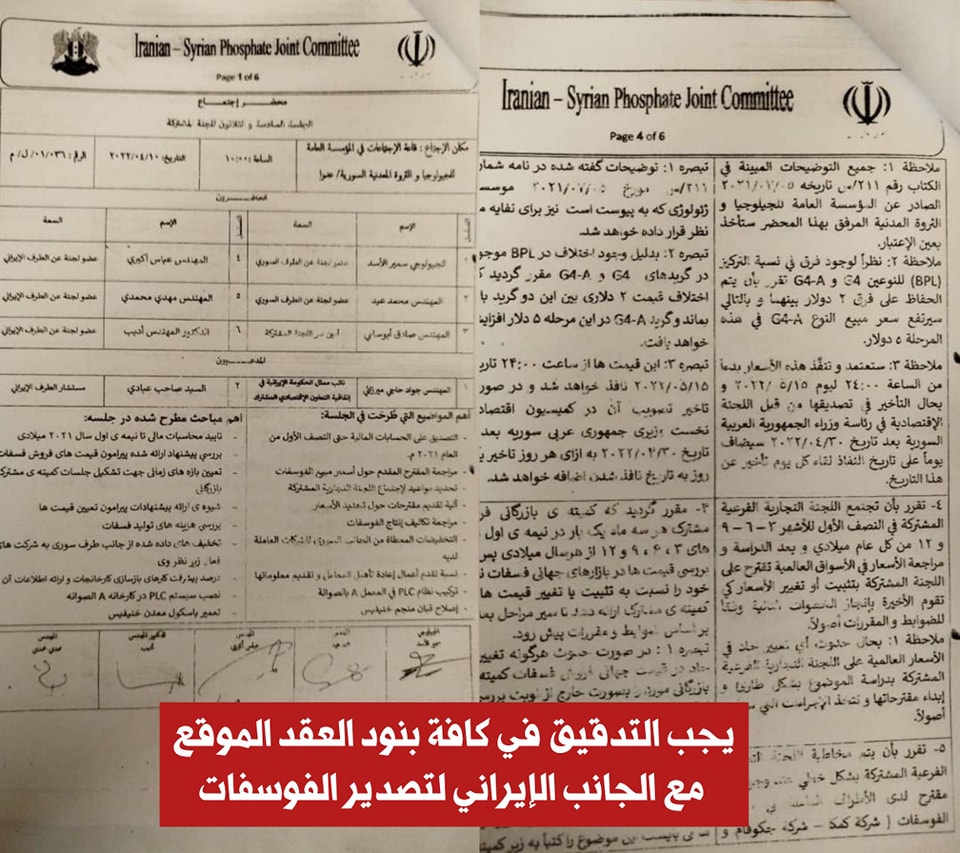Serious questions are being raised about the terms of the Syrian phosphate export contract to Iran, which was signed and managed by the General Organization for Geology and Mineral Resources before the fall of the Assad regime. However, its repercussions continue to this day.
Information indicates strong suspicions of the squandering of public funds estimated at millions of dollars due to contractual terms described as "unfair." This requires urgent intervention by specialized technical and legal committees to review the contract and recover the Syrian state's rights.
Details of the Loss: The Creation of the "A-4" Grade
The crux of the issue lies in the creation of a new phosphate grade known as "Grade A-4," which was included in the contract with the Iranian side as a preferential clause granting it an unjustified price advantage. According to allegations, this new classification allowed phosphate to be exported at a price two US dollars ($2) per ton lower than the due price.
The technical issue, as raised by specialists in this field, is the phosphate concentration criteria.
According to the standard specifications, Grade 4 phosphate is classified as containing a tricalcium phosphate (BPL) concentration of 64% to 66%. The new Grade A-4 grade is specified at a concentration of 64% to 65%.
The problem here becomes clear: the specified concentration for Grade A-4 falls entirely within the range specified for the original Grade 4. Therefore, any phosphate shipment with a concentration above 65% (and even 66%) should have been priced as the more valuable Grade 4. Instead, shipments within this higher range were exported under the lower-priced Grade A-4 classification, resulting in a direct loss of $2 per ton exported in this manner.
These specifications have been confirmed by specialized technical sources in the minerals sector. Global chemical analysis tables show that the "G4" specification actually ranges between 64-66% BPL, while "G4-A" has been specified in a narrower range of 64-65% BPL. This specification validates the technical claim that the new grade is a subset of the old grade, making any price reduction thereon suspicious.
Personnel and Responsibilities
In this case, the finger of blame points to the management of the General Organization for Geology and Mineral Resources, specifically to the Director General during the period of signing and implementing the contract, Mr. Samir al-Assad. Information indicates that he was directly responsible for approving these clauses, which harmed the state treasury.
The cumulative loss resulting from this contractual clause is estimated at millions of dollars over the past years of exports. These funds would have provided significant support to the Syrian economy had they been properly collected.

Voices are rising calling for immediate action and the formation of an independent legal and technical committee to undertake the following tasks:
- Comprehensive review: Verifying all terms of the contract signed with the Iranian side for the export of phosphate.
- Technical investigation: Analyzing shipping records and laboratory analysis reports for all ships exporting phosphate under this contract to verify the actual concentration levels of each shipment.
- Loss assessment: Calculating the exact value of the financial losses incurred by the state treasury, including the "loss of opportunity" resulting from uncollected funds.
- Legal accountability: Taking the necessary legal measures to hold those responsible for this waste accountable and recover the full rights of the Syrian state.
Protecting Syria's underground resources from unfair contracts is not only an economic requirement; it is a national duty to guarantee the rights of current and future generations to their country's resources.
Zaman Al Wasl
















Comments About This Article
Please fill the fields below.